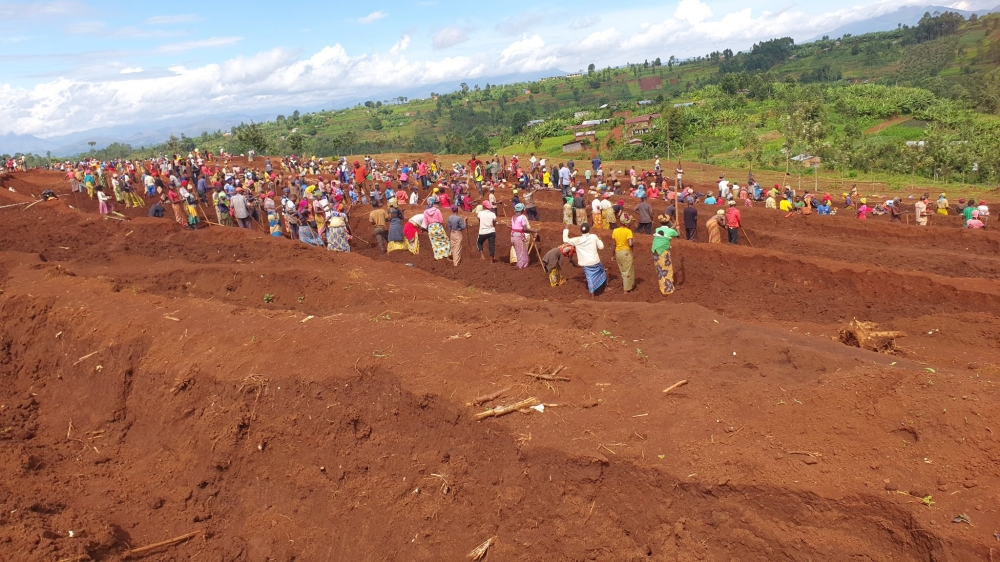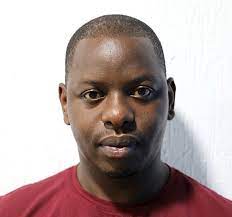

At least 588 remains of victims of the 1994 Genocide against the Tutsi have been discovered around Mibilizi Catholic Church parish in Rusizi District.
The mayor of Rusizi District, Anicet Kibiriga, told The New Times on Thursday, April 27, that the first remains were discovered at the end of March when residents were working to construct terraces across 16 hectares in the Gashonga sector.
"The residents who were constructing terraces found very few remains and later we decided to carry out intensive exhumation. We deployed 1,300 people and found the remains of 94 Genocide victims. We increased the manpower to 2,000 people to continue the search,” he said.
ALSO READ: To survivors, Mibilizi massacre was a journey through hell.
Kibiriga said after a meeting with IBUKA, the umbrella organisation of Genocide survivors’ associations, AVEGA-, the Genocide Widows Association, and local leaders from the sectors of Gashonga, Nyakarenzo, Rwimbogo and Nkungu, the manpower to exhume was increased to 2,500.
"Many genocide remains were found in the last three days because on Wednesday alone we discovered 246 and so far, 588 have been exhumed,” he said.
He urged the community to share information about the whereabouts of Genocide victims so as to get a decent burial.
ALSO READ: Renewed calls to reveal whereabouts of Genocide victims.
Genocide history in Mibilizi
During commemoration activities, the song "Mibilizi” narrates the history of the cruel massacres of the Tutsi in the area during the Genocide.
Composed by renowned singer Dieudonne Munyenshoza, it tells the story of how beautiful Mibilizi was, populated by beautiful people, but was demolished and reduced to ashes until ‘only orphans, ruins and uninhabited places remained’. The song earned its composer the moniker of the same name ‘Mibilizi’.
Testimonies indicate that when widespread killings started in April 1994, thousands of Tutsi fleeing violence in their neighbourhoods took refuge at Mibilizi Catholic Church.
ALSO READ: Rusizi emphasises unity during commemoration.
They camped in and outside the church, spending their time praying and imploring God for protection.
But just days after their arrival, attacks from Interahamwe militia who vowed to exterminate them started.
On April 18, 1994, a major attack was launched during which thousands of people were killed. The attack is said to have been coordinated by several local leaders working in close collaboration with gendarmes (equivalent to Police) and militia leaders.
Notorious among them was the then deputy governor, Theodore Munyangabe, whom survivors in the area say betrayed them.
Testimonies indicate that when Munyangabe arrived at Mibilizi Church that fateful day, he was in the company of dozens of militiamen.
To make sure that this time round the ‘mission’ was well accomplished, local militiamen called for reinforcement from the neighbouring Bugarama commune where the militia was then led by Yussuf Munyakazi, a fierce rich farmer and militia leader.
At the time of the Genocide, Munyakazi was a wealthy rice farmer and a landlord in Rusizi’s Bugarama area and a commander of the Interahamwe militia there.
His bunch of killers is particularly known to have been called for ‘help’ and to have intervened in areas where there seemed to be resistance against the killings, or where Tutsi had managed to successfully stage resistance against local killers.
His group participated in the killings in Bugarama, Mibilizi, Shangi, and the far-west in Bisesero area, testimonies say.
ALSO READ: Sebiroro narrates Bisesero massacres; bravery and forgiveness.
Munyakazi was later convicted by the International Criminal Tribunal for Rwanda for his role in the Genocide, including the Mibilizi massacres.
ALSO READ: ICTR Appeals Court upholds Munyakazi, Setako convictions.
Today’s estimates indicate that those who perished at Mibilizi might be more than 10,000.
More than 13,000 victims are buried at a memorial site that was constructed outside the church.
The Mayor of Rusizi District, last year, said that renovating the memorial site could cost Rwf700 million.


